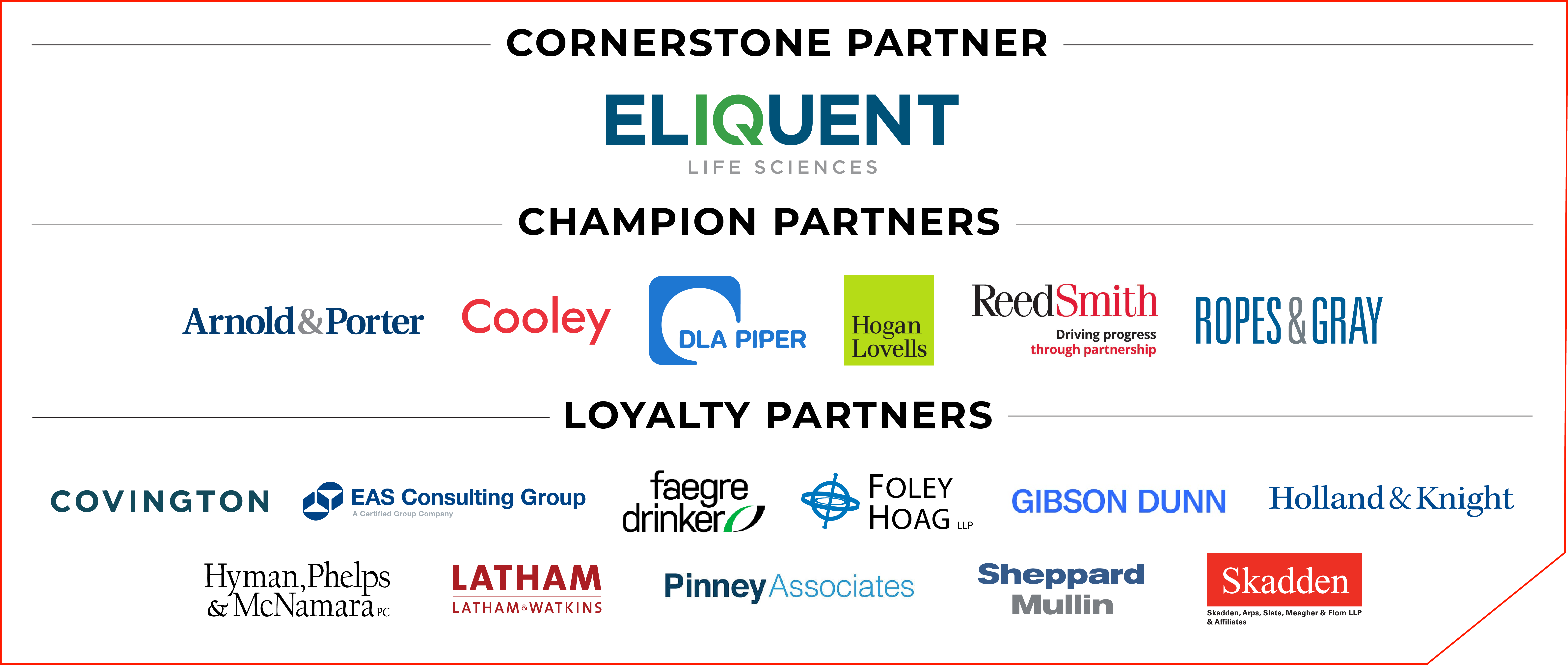
Battling Healthcare Misinformation Through Personal Agency
Introduction: A Predictability of Purpose and Process
To more effectively communicate truthful, robust, and targeted healthcare information to non-expert healthcare consumers (patients, caregivers, family decision-makers, etc.), the Food and Drug Administration (FDA) must abandon its traditional “top-down” strategy and embrace a more “first among equals” approach. In a post-pandemic environment, trust must be earned. Patients must be given the respect and agency they deserve and, increasingly, expect.
One of the key policy goals of FDA is “regulatory reproducibility”[1]—the idea that, given similar circumstances, the agency will respond in a similar (if not identical) fashion. Predictability is a foundational principle of the Prescription Drug User Fee Act[2] (PDUFA) and all the other “UFAs”[3] that fund FDA. However, when it comes to reproducing complicated scientific communications in plain English for patients, the agency struggles. This failure to communicate has hindered FDA’s ability to battle misinformation and disinformation. As FDA Commissioner Califf commented in June 2023, “Our approach and our effectiveness have been dramatically altered by the digitization of our world and the ability to accumulate and share resources and transcend previous boundaries via the Internet.”[4]
Lessons Learned from the Patient-Focused Drug Development Initiative
As the agency strives to be more predictable for the industries it regulates, it has also begun to reach out to a constituency previously considered secondary: patients. The good news is that FDA’s efforts to engage with patients through its Patient-Focused Drug Development (PFDD) program has been a success.[5] However, the lessons learned (and being learned) from the PFDD process haven’t yet extended to the agency’s battle to combat misinformation and disinformation (“Mis/Dis”).
Created under the 2012 reauthorization of the Prescription Drug User Fee Act (PDUFA V), FDA’s Patient-Focused Drug Development program (according to FDA) “is a systematic approach to help ensure that patients’ experiences, perspectives, needs, and priorities are captured and meaningfully incorporated into drug development and evaluation. As experts in what it is like to live with their condition, patients are uniquely positioned to inform the understanding of the therapeutic context for drug development and evaluation.”[6] In other words, FDA has recognized the importance of giving patients agency within the agency process.
Whose “Agency” is it Anyway?
It’s time for the agency to recognize the importance and urgency of giving agency[7]—not just to patients, but to all Americans with FDA-relevant questions that require clear and straightforward answers. Whether those questions involve vaccine safety, food labeling, tobacco regulations, or generic drug quality, the parallels with both the theory and practice of patient-focused drug development can and should have a positive and potent impact on FDA’s efforts not only to battle Mis/Dis but, more importantly, to build the foundation for improved health literacy, the common denominator of healthcare progress.[8]
The four key aspects of FDA’s PFDD program provide a roadmap to how the agency can, through communications expertise and focus, recapture its role as technical expert, trusted teacher, and healthcare advisor. Per the PFDD mission, FDA is focusing its efforts on:
(1) Facilitating and advancing use of systematic approaches to collecting and utilizing robust and meaningful patient and caregiver input to more consistently inform drug development and regulatory decision-making.
(2) Encouraging identification and use of approaches and best practices to facilitate patient enrollment and minimizing the burden of patient participation in clinical trials.
(3) Enhancing understanding and appropriate use of methods to capture information on patient preferences and the potential acceptability of tradeoffs between treatment benefit and risk outcomes.
(4) Identifying the information that is most important to patients related to treatment benefits, risks, and burden, and how to best communicate the information to support their decision making.[9]
The key words are “facilitating,” “encouraging,” “enhancing,” and “identifying”—the vocabulary of personal agency. They are the opposite of “because I said so,” “it’s complicated,” or “the science leaves no room for debate.” They are the surprising and refreshing words of a large federal bureaucracy saying, “We want you to be part of the process. We will lead. We will listen. We will (indeed, must) move forward together.”
Drive Change or be Driven by It
Words are, after all, just words. It’s actions that count. Unfortunately, the broader American public health infrastructure (FDA, CDC, NIH, state and local health authorities, etc.) all too quickly and easily reverted to “just do it” during the COVID-19 pandemic. In fact, it was often “just do it—or else”[10] in the case of vaccine administration. Actions speak louder than words and, in the age of social media (per Mark Twain), “a lie can travel around the world and back again while the truth is lacing up its boots.”
As a former FDA Associate Commissioner, I can attest to the agency’s intense desire to protect and advance America’s health. Unfortunately, that has resulted in a “stand aside and let the professionals do their job” attitude. From inside the hallowed halls of White Oak looking out, it seems a legitimate position from devoted, overworked, and harried healthcare professionals. While these reactions must be acknowledged, they aren’t acceptable and must be aggressively addressed. It shouldn’t come as a surprise that what regulators view as their day-to-day reality, the American public views as elitist and obtuse. Perception is reality, and the demonization of Anthony Fauci is Exhibit A.[11] Right words, wrong messenger. Doubling down on a messenger who became a political lightning rod was a poor public health communications decision.
These are the lessons that FDA has learned (some better than others) from its Patient-Focused Drug Development program. “As experts in what it is like to live with their condition, patients are uniquely positioned to inform . . . .”[12] As the recent pandemic reminds us, we are all patients and, as both informed and ill-informed social media chatter proves, we’re not lemmings.
An Ecosystem Problem Demands an Ecosystem Solution
According to FDA Commissioner Dr. Robert Califf, “The misinformation machine is really causing a lot of death.”[13] He’s right, but it’s important to remember this isn’t just about the COVID-19 vaccine (the sharp tip of the Mis/Dis spear). It’s also about low rates of medication adherence[14] and the “COVID Din”[15] driving an alarming decline in childhood vaccination and flu inoculation rates. Battling misinformation and disinformation is a critical public health challenge that goes beyond just COVID-19. It’s more than just a red state problem. It’s not just about chugging Clorox or whinnying about Ivermectin.
As Father John Jenkins, the President of Notre Dame, said at this year’s commencement, “The invitation to vilify an opponent is so seductive, perhaps because it can seem like a confirmation of our own virtue. If we speak only to those with whom we agree, our contempt for the evil opposition can seem like a sign of our own moral superiority.”[16] We must learn from this wise admonishment.
How will FDA (and, more broadly, the American public health community) more regularly, robustly, and strategically partner with outside stakeholders to identify, develop, and execute targeted public outreach efforts on key issues? And how will FDA position itself to identify those issues before they become crises? What lessons can be learned (and applied) from the Patient-Focused Drug Development experience? Perhaps an ad hoc internal taskforce should be assigned to report on these and other patient-centric opportunities.
External collegiality and intramural cooperation aren’t high on FDA’s long list of strengths. This must change. If the agency wants to have agency, it must recognize that giving agency to those it serves and protects must come first.
Swim with the Sharks Without Getting Eaten Alive
In the shark-infested waters of post-pandemic healthcare policy, FDA needs to build a bigger boat. That means concerted efforts to work more regularly and deeply with not just patients and caregivers, but also primary care providers, nurses, pharmacists, and the industries it regulates—all of whom, to a greater or lesser degree, suffer from the same communications malaise as FDA. The Patient-Focused Drug Development program should serve as a lesson and a guide to rebuilding trust, enhancing our nation’s levels of health literacy, and battling misinformation and disinformation across the healthcare ecosystem and communications platforms.
FDA can learn from its own experience but, if the past is prologue, it may be a tough road ahead.
[1] Peter J. Pitts, The Elliptical Billiard Balls of FDA Policy, Biocentury (Feb. 5, 2024), https://www.biocentury.com/article/651344 (last viewed May 30, 2024).
[2] PDUFA Legislation and Background, U.S. Food & Drug Admin. (Dec. 16, 2015), https://www.fda.gov/industry/prescription-drug-user-fee-amendments/pdufa-legislation-and-background (last viewed May 30, 2024).
[3] FDA: User Fees Explained, U.S. Food & Drug Admin. (May 22, 2024), https://www.fda.gov/industry/fda-user-fee-programs/fda-user-fees-explained (last viewed May 30, 2024).
[4] Speech by Commissioner Robert M. Califf to the House of Medicine, U.S. Food & Drug Admin. (June 16, 2023),
https://www.fda.gov/news-events/speeches-fda-officials/speech-commissioner-robert-m-califf-house-medicine-06162023 (last viewed Aug. 6, 2024).
[5] Patient-Focused Medical Product Development Case Examples, National Health Council (2024),
https://nationalhealthcouncil.org/additional-resources/patient-focused-medical-product-case-examples/ (last viewed Aug. 6, 2024).
[6] CDER Patient-Focused Drug Development, U.S. Food & Drug Admin. (Feb. 14, 2024), https://www.fda.gov/drugs/development-approval-process-drugs/cder-patient-focused-drug-development (last viewed May 30, 2024).
[7] James W. Moore, What Is the Sense of Agency and Why Does it Matter?, 7 Frontiers in Psychology, Aug. 29, 2016, https://www.frontiersin.org/journals/psychology/articles/10.3389/fpsyg.2016.01272/full.
[8] Peter J. Pitts & Emily Freeman, Health Literacy: The Common Denominator of Healthcare Progress, 14 The Patient 455 (2021), https://doi.org/10.1007/s40271-021-00537-9.
[9] FDA Patient-Focused Drug Development Guidance Series for Enhancing the Incorporation of the Patient’s Voice in Medical Product Development and Regulatory Decision Making, U.S. Food & Drug Admin. (Feb. 14, 2024),
https://www.fda.gov/drugs/development-approval-process-drugs/fda-patient-focused-drug-development-guidance-series-enhancing-incorporation-patients-voice-medical (last viewed July 23, 2024).
[10] Olha I. Denkovych, Viktor I. Markin & Snizhana V. Shevchenko, Penalization of Non-Compliance with the COVID-19 Vaccination: To Be or Not to Be?, 74 Wiadomości Lekarskie Med. Advances 2907 (2021).
[11] Peter J. Pitts, Uh-oh, He’s Back: Fauci is Once Again Spouting Bad COVID Advice, N.Y. Post (July 13, 2022), https://nypost.com/2022/07/13/anthony-fauci-is-once-again-spouting-bad-covid-advice/ (last viewed May 30, 2024).
[12] CDER Patient-Focused Drug Development, U.S. Food & Drug Admin. (Feb. 14, 2024), https://www.fda.gov/drugs/development-approval-process-drugs/cder-patient-focused-drug-development (last viewed July 23, 2024).
[13] Darius Tahir, FDA Head Robert Califf Battles Misinformation—Sometimes with Fuzzy Facts, KFF Health News (July 24, 2023), https://kffhealthnews.org/news/article/fda-head-robert-califf-battles-misinformation-sometimes-with-fuzzy-facts/ (last viewed May 30, 2024).
[14] Fred Kleinsinger, The Unmet Challenge of Medication Nonadherence, 22 Permanente J., Sept. 1, 2018, doi: 10.7812/TPP/18-033. PMID: 30005722; PMCID: PMC6045499.
[15] Peter J. Pitts, Un-Leveling the Public Health Playing Field, The Hill (Jan. 24, 2024), https://thehill.com/opinion/4425849-un-leveling-the-public-health-playing-field/ (last viewed May 30, 2024).
[16] Gerard Baker, Higher Ed Has a Progressive Disease. Can It Be Reversed?, Wall St. J. (May 20, 2024), https://www.wsj.com/articles/higher-ed-has-a-progressive-disease-can-it-be-reversed-958333b5?mod=hp_opin_pos_3#cxrecs_s (last viewed May 30, 2024).
Update Magazine
Winter 2025

 PETER J. PITTS, a former FDA Commissioner, is a Visiting Professor at the University of Paris School of Medicine, and President of the Center for Medicine in the Public Interest.
PETER J. PITTS, a former FDA Commissioner, is a Visiting Professor at the University of Paris School of Medicine, and President of the Center for Medicine in the Public Interest.





